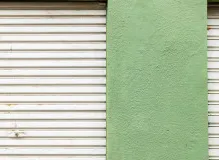For over long years, we have diligently conducted independent research and product testing. When you make a purchase through our links, we may earn a commission.
Safeguard Your Home from Flat Fire Hazards with These Top Tips
Created: 3 weeks ago

49 min Read
Introduction
Fire safety is a crucial aspect of maintaining a secure and protected home environment. Understanding the common hazards that can lead to fires is essential for safeguarding your family and property. One of the most significant fire hazards in homes is the risk of a flat fire. In this article, we will explore what flat fires are, the potential dangers they pose, and practical fire safety measures you can take to prevent and respond to such incidents.
What are Flat Fires?
Flat fires refer to fires that occur in residential flats or apartments. These fires can spread rapidly due to the close proximity of neighboring units, potentially endangering multiple households within the building. Common causes of flat fires include electrical faults, cooking accidents, smoking materials, and portable heaters.
The Dangers of Flat Fires
Flat fires can have devastating consequences, leading to property damage, injuries, and even loss of life. The rapid spread of flames and smoke can make it difficult for occupants to escape or for emergency responders to contain the fire. Therefore, it is crucial to be aware of the potential dangers and take proactive measures to prevent and prepare for flat fires.
Fire Safety Measures for Flat Fire Prevention
-
Install Smoke Detectors: Ensure that your flat is equipped with functioning smoke detectors in every room. Regularly test these devices to ensure they are operational, and replace batteries as needed.
-
Practice Safe Cooking: Never leave cooking unattended, especially with flammable materials like oil or grease. Keep flammable items away from heat sources, and have a fire extinguisher readily available in the kitchen.
-
Electrical Safety: Avoid overloading electrical outlets and extension cords. Regularly check for frayed wires and faulty sockets, and have them repaired immediately. Unplug appliances when not in use.
-
Store Flammable Materials Safely: Keep flammable liquids, such as cleaning products and aerosol sprays, in well-ventilated areas away from heat sources. Ensure they are stored securely and out of reach of children.
-
Proper Disposal of Smoking Materials: If you smoke, make sure to fully extinguish cigarette butts and dispose of them safely in designated ashtrays. Avoid smoking in bed or when feeling drowsy.
-
Have an Escape Plan: Create an escape plan with all members of your household. Identify exit routes and establish a meeting point outside the building. Practice the plan regularly to ensure everyone knows what to do in case of a fire.
Conclusion
Being aware of the potential dangers and taking preventative measures is crucial for keeping your home and loved ones safe from flat fires. By following the fire safety measures outlined in this article, you can significantly reduce the risk of a flat fire and mitigate the potential consequences. Remember, fire safety is a collective responsibility, and taking proactive steps towards prevention is essential for ensuring a secure living environment.
Common Causes of Home Fires
When it comes to home fires, it's essential to understand the primary culprits behind these incidents. By identifying and addressing these common causes, you can reduce the risk of a devastating flat fire in your home. Let's explore some of the main factors that contribute to residential fires, including electrical faults, cooking accidents, smoking materials, and portable heaters.
Electrical Faults: A Hazard Lurking Within
One significant cause of home fires is electrical faults. These can occur due to various reasons, including outdated wiring, overloaded circuits, and faulty appliances. Faulty wiring can lead to electrical sparks, which can quickly ignite nearby combustible materials, resulting in a flat fire. To minimize the risk of electrical fires, it's important to maintain your electrical system, not overload outlets, and promptly address any signs of electrical problems such as flickering lights or tripped circuit breakers.
Cooking Accidents: A Dangerous Flame in the Kitchen
Cooking accidents are another leading cause of home fires. Unattended cooking, overheated cooking oil, and flammable items left too close to heat sources can all lead to a flat fire. It only takes a brief moment of distraction for a cooking fire to ignite and spread. To prevent cooking-related fires, always stay in the kitchen while cooking, use a timer as a reminder, and keep flammable items away from the stove. Having a fire extinguisher within reach is also crucial for responding quickly to kitchen fires.
Smoking Materials: A Smoldering Threat
Smoking materials, such as cigarettes and lighters, pose a significant fire hazard in homes. Carelessly discarded cigarette butts or improper handling of smoking materials can lead to fires, especially when these items come in contact with flammable materials in the surroundings. To minimize the risk of smoking-related fires, ensure that smoking materials are extinguished properly in designated ashtrays, never smoke when feeling drowsy or in bed, and consider quitting smoking altogether for a safer home environment.
Portable Heaters: Warmth with Caution
During colder months, portable heaters can provide much-needed warmth. However, if not used correctly, these heaters can become a fire hazard. Overheating, being placed too close to flammable materials, or tipping over can all lead to a destructive fire. To use portable heaters safely, follow the manufacturer's instructions, keep them at least three feet away from anything combustible, and never leave them unattended or operating while you sleep.
By understanding these common causes of home fires, you can take proactive steps to prevent flat fires. Implementing safety measures, such as regular electrical inspections, safe cooking practices, responsible handling of smoking materials, and cautious use of portable heaters, is crucial in protecting your home and loved ones from the devastating consequences of a flat fire. Stay vigilant, take fire safety seriously, and remember that prevention is key in ensuring a fire-free home environment.
Introduction
Electrical fires are a common and potentially devastating hazard in homes. Understanding how these fires start and knowing what precautions to take can help you reduce the risk of an electrical fire in your home. In this article, we will explore the common causes of electrical fires and provide you with practical, actionable tips to prevent them and keep your home safe.
Common Causes of Electrical Fires
-
Faulty Wiring: 🚨Faulty wiring is a leading cause of electrical fires. This can result from improper installation, outdated or deteriorated wiring, or overloading of circuits. It is crucial to have a professional electrician regularly inspect your home's wiring to identify any potential hazards.
-
Electrical Appliances: Old or malfunctioning electrical appliances can be fire hazards. Make sure to regularly check and maintain your appliances, including frayed cords, loose connections, and overheating. Replace or repair any damaged appliances promptly.
-
Overloaded Circuits: 🚨A power overload occurs when too many devices are connected to a single circuit. This can cause the circuit to overload and overheat, potentially resulting in a fire. Avoid plugging multiple high-wattage appliances into the same outlet and distribute your electrical load evenly throughout your home.
-
Extension Cords and Power Strips: Misused extension cords and overloaded power strips can pose a fire risk. Avoid daisy-chaining extension cords, and use power strips with built-in surge protectors to prevent overheating.
-
Improper Light Bulbs: Using light bulbs with a wattage higher than what's recommended for a fixture can cause overheating and lead to a fire. Always check the maximum wattage allowed for your light fixtures and use the appropriate bulbs.
Electrical Fire Prevention Tips
-
Hire a Professional: When it comes to electrical work, always hire a professional electrician for installations, repairs, and inspections. They have the expertise to ensure your electrical system is safe and up to code.
-
Regular Inspections: Schedule regular electrical inspections to identify any potential hazards or wiring issues. (italicized)
-
Replace Damaged Cords and Appliances: Monitor your electrical cords and appliances for any signs of wear or damage, such as frayed cords, exposed wires, or burning smells. (bold)
-
Avoid Overloading Circuits: Be mindful of the number of devices you plug into a single outlet or circuit. Use surge protectors and distribute electrical loads appropriately. (underline)
-
Extension Cord Safety: Use extension cords only temporarily and for their intended purpose. Avoid running them under carpets or rugs, and never overload them with multiple appliances. (italicized)
-
Proper Light Bulb Usage: Always use the correct wattage bulbs for your fixtures. Check the manufacturer's recommendations and never exceed the maximum wattage allowed. (bold)
Conclusion
Preventing electrical fires requires a combination of awareness, vigilance, and appropriate maintenance. By understanding the common causes of electrical fires and implementing the preventive measures outlined in this article, you can significantly reduce the risk of an electrical fire in your home. Remember, electrical safety is a responsibility that should not be taken lightly, and taking proactive steps to prevent electrical fires is essential for the well-being of your home and loved ones.
Cooking is one of the leading causes of flat fires. Implementing smart safety measures in the kitchen is essential to prevent these dangerous incidents. By following these guidelines, you can greatly reduce the risk of a kitchen fire and ensure the safety of your home.
1. Stay in the Kitchen: Whenever you are cooking, stay in the kitchen and keep an eye on the stove or oven at all times. Many kitchen fires start when food is left unattended, leading to overheating or burning.
2. Clear Clutter: Keep the cooking area free of clutter. Flammable items such as towels, paper, or plastic bags should be kept away from heat sources to prevent accidental ignition.
3. Use Cautiously: Handling cooking equipment with care is vital for fire prevention. When using stovetops, turn the handles of pans and pots inward to avoid accidental spills. If a fire does occur, never attempt to put it out with water, as it can make the situation worse. Instead, smother the flames with a pot lid or use a fire extinguisher.
4. Maintain Appliances: Regularly inspect and maintain cooking appliances to ensure they are in good working condition. Damaged or faulty equipment can pose a higher risk of fire. If you notice any issues, have them repaired by a qualified professional.
5. Keep Children and Pets Away: When cooking, keep children and pets at a safe distance from the kitchen. This reduces the risk of them coming into contact with hot surfaces or accidentally causing a fire.
6. Ensure Proper Ventilation: Adequate ventilation is essential to prevent the buildup of smoke and grease in the kitchen. Use range hoods or open windows and doors to maintain good air circulation.
7. Be Mindful of Flammable Materials: Take precautions when using flammable materials such as cooking oils, greases, and alcohol-based solvents. Keep them away from open flames and store them properly in designated areas.
8. Have a Fire Safety Plan: It is crucial to have a fire safety plan in place for your household. Ensure that everyone knows what to do in case of a kitchen fire, including how to safely exit the building and where to meet outside. Regularly practice the plan to reinforce these procedures.
By implementing these cooking safety measures, you can significantly reduce the risk of a kitchen fire in your flat. Remember, your safety and the safety of your loved ones should always be the top priority. Stay vigilant and practice these precautions to create a secure environment in your home.
Fire safety is a crucial aspect of maintaining a secure and protected home environment. Understanding the common hazards that can lead to fires is essential for safeguarding your family and property. One of the most significant fire hazards in homes is the risk of a flat fire. 🔥
What are Flat Fires?
Flat fires refer to fires that occur in residential flats or apartments. These fires can spread rapidly due to the close proximity of neighboring units, potentially endangering multiple households within the building. Common causes of flat fires include electrical faults, cooking accidents, smoking materials, and portable heaters. 🏢
The Dangers of Flat Fires
Flat fires can have devastating consequences, leading to property damage, injuries, and even loss of life. The rapid spread of flames and smoke can make it difficult for occupants to escape or for emergency responders to contain the fire. Therefore, it is crucial to be aware of the potential dangers and take proactive measures to prevent and prepare for flat fires. 🚒
Fire Safety Measures for Flat Fire Prevention
-
Install Smoke Detectors: Ensure that your flat is equipped with functioning smoke detectors in every room. Regularly test these devices to ensure they are operational, and replace batteries as needed.
-
Practice Safe Cooking: Never leave cooking unattended, especially with flammable materials like oil or grease. Keep flammable items away from heat sources, and have a fire extinguisher readily available in the kitchen.
-
Electrical Safety: Avoid overloading electrical outlets and extension cords. Regularly check for frayed wires and faulty sockets, and have them repaired immediately. Unplug appliances when not in use.
-
Store Flammable Materials Safely: Keep flammable liquids, such as cleaning products and aerosol sprays, in well-ventilated areas away from heat sources. Ensure they are stored securely and out of reach of children.
-
Proper Disposal of Smoking Materials: If you smoke, make sure to fully extinguish cigarette butts and dispose of them safely in designated ashtrays. Avoid smoking in bed or when feeling drowsy.
-
Have an Escape Plan: Create an escape plan with all members of your household. Identify exit routes and establish a meeting point outside the building. Practice the plan regularly to ensure everyone knows what to do in case of a fire.
Conclusion
Being aware of the potential dangers and taking preventative measures is crucial for keeping your home and loved ones safe from flat fires. By following the fire safety measures outlined in this article, you can significantly reduce the risk of a flat fire and mitigate the potential consequences. Remember, fire safety is a collective responsibility, and taking proactive steps towards prevention is essential for ensuring a secure living environment. 🔥🏠
Home fires can occur due to various reasons, and understanding the common causes is crucial for fire prevention. Here are some primary culprits behind home fires:
-
Electrical Faults: Electrical issues, such as faulty wiring, overloaded circuits, or electrical equipment malfunctions, can lead to devastating fires. It is vital to regularly inspect and maintain the electrical systems in your home to prevent potential fire hazards.
-
Cooking Accidents: Cooking is one of the leading causes of home fires, especially when unattended. Hot oil, grease, and flammable materials in the kitchen can easily catch fire if left on a stove or in an oven. Always stay in the kitchen while cooking, use timers as reminders, and keep a fire extinguisher nearby.
-
Heating Equipment: Improper use of heating devices, such as portable heaters or fireplaces, can result in home fires. Placement near combustible materials, lack of proper ventilation, or failure to maintain these appliances can lead to dangerous situations. Follow manufacturer instructions and ensure proper maintenance to minimize fire risks.
-
Smoking Materials: Carelessly discarded cigarette butts or improper handling of smoking materials can ignite fires. Never smoke in bed or leave lit cigarettes unattended. Always ensure proper disposal of cigarette butts in designated ashtrays, as smoldering materials can easily cause a fire.
-
Candles: Unattended candles are a significant fire hazard. A small flame can quickly ignite nearby objects, leading to a house fire. Avoid leaving candles burning in unoccupied rooms, and always place them on stable surfaces away from flammable materials. Consider using flameless candles or LED alternatives for added safety.
-
Children and Fire Play: Curiosity about fire can be dangerous if not properly supervised. Children playing with matches or lighters may accidentally start a fire. Educate children about the dangers of fire and keep matches and lighters out of their reach.
-
Faulty Appliances or Electronics: Malfunctioning appliances or electronics can cause electrical sparks, leading to fires. Regularly check the condition of your appliances, cords, and outlets for any signs of damage. Unplug appliances when not in use and schedule regular maintenance, if needed.
-
Flammable Liquids: Improper storage or handling of flammable liquids, such as gasoline, paints, or cleaning solvents, can pose a significant fire risk. Keep these substances in well-ventilated areas away from heat sources, and follow proper storage guidelines.
By understanding these common causes of home fires and taking preventative measures, you can greatly reduce the risk of a fire in your property. Regular maintenance, proper storage, and practicing fire safety behaviors can go a long way in keeping yourself and your loved ones safe from the dangers of a house fire.
When it comes to assessing fire hazards in your home, identifying potential risks is a crucial step towards ensuring your safety and the protection of your property. One of the significant fire hazards to be mindful of is the risk of a flat fire. Let's explore some common areas where these hazards can occur:
Electrical Systems: Faulty wiring, overloaded circuits, and damaged electrical outlets are common culprits for starting flat fires. It's important to regularly inspect your electrical systems and address any issues promptly.
Cooking Areas: Kitchen fires are a leading cause of flat fires. Grease spills, unattended stovetops, and malfunctioning appliances can quickly escalate into dangerous fire incidents. Always monitor your cooking and have a fire extinguisher within reach.
Heating Equipment: Portable heaters, radiators, and faulty central heating systems can pose a significant fire risk if not properly maintained. Keep flammable materials at a safe distance from heat sources and ensure regular inspections are conducted.
Smoking Materials: Carelessly discarded cigarette butts or improperly extinguished smoking materials can ignite fires quickly. Establish designated smoking areas and provide secure ashtrays for proper disposal.
Flammable Substances: Storing flammable liquids such as gasoline, paint thinners, or solvents inappropriately can lead to disastrous consequences. Always keep these substances in well-ventilated areas, away from any potential ignition sources.
Appliances: Faulty appliances with damaged cords or overheating components can spark fires. Regularly inspect and maintain your appliances, and unplug them when not in use to minimize the risk.
Combustible Materials: Cluttered spaces and improper storage of combustible materials like paper, clothing, or household goods can fuel fires. Keep your living area organized and dispose of unnecessary items safely.
Children and Fire Safety: Educate children about the dangers of fire and establish rules around fire safety. Keep matches and lighters out of reach and teach them how to respond in case of a fire emergency.
By actively identifying these potential fire hazards in your home, you can take appropriate measures to minimize the risk of a flat fire. Implementing fire safety measures, including installing smoke detectors, maintaining electrical systems, practicing safe cooking habits, and creating an emergency escape plan, are essential for the overall safety of your household.
Remember, fire prevention starts with awareness and taking proactive steps to eliminate potential risks. By remaining vigilant and regularly assessing the fire hazards in your home, you can significantly reduce the chances of a flat fire occurrence and ensure the well-being of your loved ones.
Introduction: The Importance of Fire Safety in the Home
Fire safety is a critical aspect of maintaining a secure and protected home environment. Understanding the potential fire hazards and taking proactive measures to prevent and respond to fire incidents is essential for the safety of your family and the preservation of your property. One of the most significant fire hazards in residential settings is the risk of a flat fire. In this article, we will explore what flat fires are, the potential dangers they pose, and practical fire safety measures you can take to keep your home safe from this type of fire. Let's dive in!
What are Flat Fires?
Flat fires refer to fires that occur in residential flats or apartments. These fires can quickly escalate and spread due to the close proximity of neighboring units, putting multiple households at risk. The causes of flat fires can vary, including electrical faults, cooking accidents, smoking materials, and portable heaters. It is essential to be aware of these potential fire sources and take appropriate precautions to prevent flat fires from happening.
The Dangers of Flat Fires
Flat fires can have devastating consequences, endangering lives and causing significant property damage. The rapid spread of flames and smoke in close quarters can make it challenging to escape and for emergency responders to contain the fire efficiently. Without proper fire safety measures in place, occupants are at a higher risk of injury or even fatality. Therefore, understanding the dangers associated with flat fires is crucial in implementing effective preventive strategies.
Fire Safety Measures for Flat Fire Prevention
-
Install Smoke Detectors: Ensure that your flat is equipped with functional smoke detectors in every room. Regularly test these devices to ensure proper functioning, and replace batteries as needed.
-
Practice Safe Cooking: Never leave cooking unattended, especially when dealing with flammable materials like oil or grease. Keep flammable items away from heat sources and have a fire extinguisher readily available in the kitchen.
-
Ensure Electrical Safety: Avoid overloading electrical outlets and extension cords. Regularly check for frayed wires and faulty sockets, and have them repaired immediately. Remember to unplug appliances when not in use.
-
Store Flammable Materials Safely: Safely store flammable liquids, such as cleaning products and aerosol sprays, in well-ventilated areas away from heat sources. Ensure they are securely stored and out of reach of children.
-
Proper Disposal of Smoking Materials: If you smoke, fully extinguish cigarette butts and dispose of them safely in designated ashtrays. Avoid smoking in bed or when feeling drowsy.
-
Have an Escape Plan: Create an escape plan with all members of your household. Identify exit routes and establish a meeting point outside the building. Regularly practice the plan to ensure everyone knows what to do in case of a fire.
Implementing these fire safety measures will significantly reduce the risk of a flat fire and increase the chances of a safe evacuation in case of an emergency. It is vital to be proactive in taking preventive steps and ensuring the well-being of your family and home.
Conclusion
Maintaining proper fire safety protocols is paramount in protecting your home and loved ones from the dangers of flat fires. By understanding the causes and risks associated with these types of fires and implementing the suggested preventive measures, you can significantly reduce the likelihood of a flat fire occurring. Remember, fire safety is a collective responsibility, and it is crucial to stay vigilant and take proactive steps in creating a secure living environment. Stay safe!
When it comes to the common causes of house fires, it's essential to be aware of the various risks that can lead to these devastating incidents. By understanding the potential hazards, you can take proactive measures to prevent and mitigate the risk of a fire occurring in your home.
-
Electrical Faults: Faulty electrical wiring or malfunctioning appliances can ignite a fire. Ensure that your electrical systems are up to code and have them regularly inspected by a professional. Avoid overloading outlets and extension cords to minimize the risk of electrical fires.
-
Cooking Accidents: Cooking-related fires are a leading cause of house fires. Grease or oil fires can quickly escalate, so it's crucial to never leave your cooking unattended, especially when working with high heat. Keep flammable items away from stovetops and have a fire extinguisher readily accessible in the kitchen.
-
Heating Systems: Portable heaters, furnaces, and space heaters can pose fire hazards if not used correctly. Keep flammable objects at a safe distance from heating sources and ensure that all heating equipment is in good working condition. Never leave heaters unattended and turn them off when not in use.
-
Smoking: Careless disposal of smoking materials, such as cigarettes or lit matches, can easily spark a fire. Avoid smoking indoors, especially when feeling drowsy or in bed. Always extinguish cigarettes properly and use designated ashtrays.
-
Candles: Although candles can create a cozy ambiance, they can also cause fires if left unattended. Keep candles away from flammable materials and place them on stable surfaces. Always extinguish candles before leaving a room or going to bed.
-
Faulty Appliances: Faulty or malfunctioning appliances, such as dishwashers, dryers, or refrigerators, can be potential fire hazards. Regularly inspect your appliances for any signs of damage or malfunctioning parts. If you notice any issues, have them repaired or replaced promptly.
-
Children and Fireplay: Children are naturally curious and may experiment with fire, leading to accidental fires. Educate your children about the dangers of playing with fire and establish clear rules and boundaries. Store matches and lighters out of reach of children.
-
Flammable Materials: Storing flammable liquids, such as gasoline or paint, inappropriately can increase the risk of a fire. Keep flammable materials in well-ventilated areas, away from heat sources, and store them in approved containers.
-
Electrical Outlets and Wiring: Damaged or faulty electrical outlets and wiring can create sparks and ignite a fire. Regularly check cords for fraying or exposed wires, and replace them if necessary. Avoid running cords under carpets or rugs, as this can lead to overheating.
-
Arson: Unfortunately, arson is a significant cause of house fires. Ensure that your home is secure by installing proper alarm systems, motion sensor lights, and security cameras. Be vigilant about suspicious activities in your neighborhood, and report any concerns to the authorities.
By understanding the common causes of house fires, you can incorporate these fire safety measures into your daily routine and make your home a safer place for you and your loved ones. Remember, prevention is key, and taking proactive steps to minimize fire risks is crucial for protecting what matters most.
One of the most critical components of fire safety in your home is having working smoke alarms. Smoke alarms serve as your first line of defense by quickly detecting the presence of smoke and alerting you to a potential flat fire. These devices are designed to detect the by-products of combustion, such as smoke particles, before the fire spreads and becomes unmanageable.
Installing smoke alarms in your flat is not only mandatory in many jurisdictions, but it is also an essential step in protecting yourself and your loved ones. When choosing smoke alarms, look for models that are certified and meet the necessary safety standards. It's recommended to install smoke alarms in every sleeping area, outside each bedroom, and on every level of your flat, including the basement.
Regular maintenance of smoke alarms is crucial to ensure their effectiveness. Test the alarm monthly by pressing the test button, and make sure to replace the batteries at least once a year. Many modern smoke alarms come with long-life batteries or built-in lithium-ion batteries that need replacing only after ten years. However, it's still important to perform regular checks to ensure they are in good working condition.
In addition to individual smoke alarms, interconnected smoke alarm systems provide an added layer of protection. With interconnected alarms, when one alarm detects smoke, all alarms in the system will sound simultaneously. This enables everyone in the flat to be immediately alerted, even if the fire starts in a different area or on a different floor.
Remember, smoke alarms are your early warning system for a flat fire, and they can significantly increase your chances of safely escaping the premises. Develop an escape plan and practice it with your family, ensuring everyone knows how to respond when the smoke alarms sound. The plan should include a designated meeting place outside the building where everyone can gather to ensure everyone has safely escaped.
It's important to regularly check and maintain your smoke alarms to ensure they are functioning correctly. If you ever experience a false alarm or notice any issues with your smoke alarms, address them immediately by contacting a professional to inspect and repair the devices. When it comes to fire safety, there is no room for compromise.
In conclusion, smoke alarms are a crucial component of fire safety in your flat. Installing them in compliance with local regulations and maintaining them regularly is essential for your protection. Don't overlook the importance of these simple devices and the peace of mind they can provide. Keep your loved ones safe by making sure your flat is equipped with working smoke alarms.
A crucial aspect of fire safety is having a well-prepared fire escape plan in case of emergencies. Whether you live in a flat or any other type of residential property, having a clear and practiced escape route can make a significant difference in ensuring the safety of yourself and your loved ones.
Here are some steps to help you create an effective fire escape plan:
-
Identify the Exits: Take a thorough walk-through of your flat to identify all possible exit points. Locate the primary exit, such as the main door, and any secondary exits, such as windows or fire escape routes. Make sure all exits are easily accessible and not blocked by furniture or clutter.
-
Establish a Meeting Point: Choose a safe location outside the building where everyone in your household will gather after evacuating. This could be a neighbor's house, a designated spot in the parking lot, or a nearby landmark. The important thing is to have a specific meeting point to ensure that everyone is accounted for.
-
Communicate the Plan: Discuss and explain the fire escape plan to everyone in your household, including children, elderly family members, and anyone with mobility challenges. Ensure that everyone understands the evacuation routes, the meeting point, and the importance of following the plan without hesitation.
-
Practice Evacuations: Regularly conduct drills to practice the fire escape plan with your household members. This will help familiarize everyone with the designated routes and build muscle memory for a quick and efficient evacuation. Simulate different scenarios and emphasize the importance of staying calm and focused during a fire emergency.
-
Account for Special Needs: If there are individuals in your household with special needs, ensure that your fire escape plan accommodates their requirements. For example, if someone relies on a wheelchair, consider installing an evacuation chair or discussing alternative methods of assistance with local fire services.
-
Maintain Clear Exit Routes: Keep all exit routes free from clutter and obstruction. Make sure that everyone in the household knows not to block doorways or windows with furniture or other items. Regularly check and maintain the functionality of windows and fire escape routes.
Remember, during a fire emergency, every second counts. By creating and practicing a well-designed fire escape plan, you can minimize the risk of injury and ensure a swift and safe evacuation. Don't forget to regularly review and update your plan as needed, taking into account any changes in your household or property layout. Stay vigilant, stay prepared, and prioritize the safety of yourself and your loved ones.
Introduction
Electricity is an essential part of our daily lives, powering our homes and enabling us to use various appliances and devices. However, electrical fires pose a significant risk if proper precautions are not taken. In this article, we will explore practical tips for safe electrical usage to help prevent flat fires caused by electrical faults.
Importance of Electrical Safety
Flat fires caused by electrical faults can result in devastating consequences, including property damage, injuries, and even fatalities. Faulty wiring, overloaded circuits, and malfunctioning electrical appliances are common culprits behind these fires. Therefore, it is crucial to prioritize electrical safety to protect your home and loved ones.
Tips for Safe Electrical Usage
-
Regular Electrical Inspections: Ensure that your flat's electrical system is professionally inspected on a regular basis. This can help identify any potential issues or hazards before they escalate into a fire risk.
-
Don't Overload Sockets: Avoid overloading electrical sockets with too many appliances or extension cords. This can lead to overheating and create a fire hazard. Spread out your electrical devices across different outlets to distribute the load evenly.
-
Replace Damaged Cords and Wires: Frayed or damaged cords and wires pose a significant risk of electrical fires. Inspect all cords regularly and replace any that are worn out, damaged, or have exposed wires.
-
Use Surge Protectors: Invest in surge protectors for your electronic devices and appliances. Surge protectors help prevent power surges from damaging your electrical equipment, reducing the risk of fires caused by electrical malfunctions.
-
Unplug Appliances When Not in Use: When appliances are not in use, it's a good practice to unplug them. This prevents them from drawing unnecessary power and eliminates the risk of electrical fires due to faulty equipment.
-
Don't Overload Circuits: Be mindful of the electrical load when using high-wattage appliances. Overloading circuits can cause them to overheat and potentially ignite a fire. Spread out the use of power-hungry devices and consider installing additional circuits if needed.
-
Properly Dispose of Damaged or Outdated Electronics: When electronics or appliances become damaged or outdated, dispose of them properly. Store them in a safe area until they can be recycled or disposed of according to local regulations.
-
Prevent Electrical Cord Damage: Avoid placing heavy furniture or sharp objects on electrical cords, as this can damage the insulation and increase the risk of electrical fires. Routinely check cords for signs of wear and tear and replace them if necessary.
-
Educate Family Members on Electrical Safety: It is essential to educate everyone in your household about electrical safety practices. Teach them how to properly use electrical appliances, the importance of not tampering with electrical outlets, and how to respond in case of an electrical emergency.
By following these tips for safe electrical usage, you can significantly reduce the risk of flat fires caused by electrical faults. Prioritizing electrical safety not only protects your property but also ensures the well-being of everyone in your home. Remember, prevention is the key to avoiding electrical fires, so take proactive measures to maintain a safe and secure living environment.
Introduction
Flat fires are a significant concern for many homeowners and residents. The risk of a flat fire poses numerous hazards, including property damage, injuries, and even loss of life. It is essential to understand the potential dangers associated with flat fires and take proactive measures to prevent and respond to these incidents. In this article, we will explore the common causes of flat fires, the dangers they pose, and practical fire safety measures that can help protect your home and loved ones.
Common Causes of Flat Fires
Flat fires can result from various factors, each presenting unique risks. Identifying these common causes is crucial for preventing such incidents and minimizing their potential impact.
-
Electrical Faults: Faulty wiring, overloaded circuits, or malfunctioning electrical appliances can all lead to flat fires. Regularly inspecting electrical systems, addressing any issues promptly, and using certified professionals for installations and repairs are essential precautions.
-
Cooking Accidents: Unattended cooking, overheating pans, and grease fires are frequent causes of flat fires. Practicing safe cooking habits, such as staying in the kitchen while cooking and keeping flammable materials away from heat sources, is paramount.
-
Smoking Materials: Cigarettes, cigars, and other smoking materials can quickly ignite and cause devastating flat fires. Properly disposing of cigarette butts, avoiding smoking in bed or when drowsy, and using designated ashtrays are crucial safety measures.
-
Heating Equipment: Portable heaters and electric blankets, if used improperly or left unattended, can cause flat fires. Ensure proper ventilation, keep flammable materials away from heat sources, and never leave heating equipment running while unattended.
-
Candles and Open Flames: Unattended candles, forgotten lit cigarettes, and other open flames can easily ignite combustible materials. Always extinguish candles before leaving a room and avoid using open flames near flammable objects.
-
Children and Fire Play: Curiosity can lead children to experiment with fire, increasing the risk of accidental flat fires. Educate children about the dangers of fire, keep matches and lighters out of their reach, and install childproof fire safety devices.
The Dangers of Flat Fires
Flat fires pose significant threats both to the occupants of the affected flats and neighboring units within the building. The rapid spread of flames, heat, and smoke can obstruct escape routes, making it difficult for residents to evacuate safely. The inhalation of toxic smoke and gases can cause severe respiratory issues, further complicating emergency evacuation. Additionally, flat fires can spread to adjacent flats, amplifying property damage and endangering more lives.
Fire Safety Measures for Flat Fire Prevention
Taking proactive measures to prevent flat fires is crucial for maintaining a safe living environment. Here are some practical fire safety measures you can implement:
-
Install Smoke Alarms: Ensure your flat is equipped with functioning smoke alarms in each room. Test them regularly and replace batteries at least once a year.
-
Practice Safe Cooking: Stay in the kitchen while cooking, and never leave cooking unattended. Keep flammable materials away from heat sources and have a fire extinguisher readily accessible.
-
Smoking Safety: Avoid smoking indoors, especially in bed or when feeling drowsy. Always extinguish cigarettes in designated ashtrays and properly dispose of ashes.
-
Electrical Maintenance: Regularly inspect electrical systems for any signs of damage or malfunction. Avoid overloading electrical outlets and have repairs conducted by licensed professionals.
-
Proper Storage: Store flammable materials, such as cleaning products and aerosol sprays, in well-ventilated areas away from heat sources. Keep them securely closed and out of reach of children.
-
Escape Plan: Develop an escape plan with your household members, identifying emergency exits and meeting points outside the building. Practice the plan regularly to ensure everyone knows what to do in case of a flat fire.
By implementing these fire safety measures and promoting awareness within your household, you can significantly reduce the risk of a flat fire and protect your home and loved ones.
In conclusion, being informed about the common causes of flat fires, recognizing the dangers they present, and implementing preventative measures is essential for fire safety in residential flats. By taking a proactive approach and following the recommended fire safety guidelines, you can minimize the risk of flat fires and create a secure living environment for yourself and your family.
Flat fires can be caused by a variety of factors, each with its own level of risk. By familiarizing ourselves with these common causes, we can take proactive measures to prevent them and ensure the safety of our homes.
-
Electrical Faults: Electrical faults are a leading cause of flat fires. Faulty wiring, overloaded circuits, and malfunctioning appliances can spark a fire if left unchecked. Regularly inspect your electrical system and promptly address any issues to minimize the risk of an electrical fire.
-
Cooking Accidents: Cooking-related fires are another significant contributor to flat fires. Grease fires, unattended stovetops, and flammable materials near heat sources can quickly escalate into a dangerous situation. Always stay vigilant when cooking and keep a close eye on your stove.
-
Smoking Materials: Careless handling of smoking materials, such as cigarettes, cigars, or pipes, can lead to flat fires. It is important to properly extinguish smoking materials and dispose of them in designated ashtrays. Avoid smoking in bed or when feeling drowsy, as this can increase the risk of fires.
-
Heating Equipment: Portable heaters, electric blankets, and other heating devices can pose a fire hazard if misused. Make sure to follow the manufacturer's instructions, keep flammable materials at a safe distance, and never leave heating equipment unattended.
-
Faulty Appliances: Appliances that are old, damaged, or poorly maintained can become a fire hazard. Regularly inspect your appliances for frayed cords, loose connections, or unusual smells, and have them repaired or replaced as necessary.
-
Candles: While candles can create a cozy atmosphere, they are also a common cause of fires. Ensure that candles are placed on stable surfaces away from flammable objects and never leave them unattended.
-
Children and Fire Play: Curiosity can lead children to tamper with fire sources, increasing the risk of fires. Educate your children about the dangers of playing with fire and keep matches, lighters, and other ignition sources out of their reach.
By being mindful of these common causes of flat fires, we can take the necessary precautions to minimize the risk of such incidents occurring in our homes. Establishing fire safety practices, investing in smoke detectors, and creating an emergency escape plan are crucial steps towards ensuring the safety and well-being of our households. Remember, prevention is key when it comes to flat fires, and taking proactive measures can make all the difference in protecting our homes and loved ones.
Introduction
Fire safety is of utmost importance in maintaining a secure and protected home environment. It is crucial to be aware of potential fire hazards and take proactive measures to prevent and respond to fire incidents effectively. In this article, we will emphasize the importance of fire safety in your home and provide practical tips to ensure the safety and well-being of your family and property.
The Devastation of Flat Fires
One particular fire hazard that poses a significant threat to residential areas is a flat fire. Flat fires can rapidly spread due to the close proximity of neighboring units, putting multiple households at risk. These fires can occur due to various reasons, including faulty electrical wiring, cooking accidents, smoking materials, and heating appliances. The devastation caused by flat fires can be catastrophic, resulting in property damage, injuries, and even loss of life.
Preventing Flat Fires and Ensuring Safety
To ensure fire safety in your home, it is crucial to adopt preventive measures that significantly reduce the risk of flat fires. Here are some practical tips to keep in mind:
-
Install and Maintain Smoke Detectors: Install smoke detectors on each level of your home, including inside bedrooms and near common areas. Regularly test and ensure that they are in proper working condition. Replace batteries at least twice a year or as recommended by the manufacturer.
-
Practice Safe Cooking Habits: Never leave cooking unattended, especially when using high heat or cooking with grease. Keep flammable materials, such as kitchen towels or curtains, away from the stove. Have a fire extinguisher within reach and know how to use it effectively.
-
Electrical Safety: Regularly inspect electrical cords and outlets for signs of damage or wear. Avoid overloading outlets and use power strips with built-in surge protectors for added safety. Unplug appliances when not in use and keep them away from water sources.
-
Proper Storage of Flammable Materials: Store flammable liquids, such as cleaning products and gasoline, in well-ventilated areas outside of the main living space. Keep them in properly sealed containers and away from sources of ignition.
-
Responsible Smoking Habits: If you smoke, do so outside the home and make sure to fully extinguish cigarette butts. Use sturdy and designated ashtrays, and avoid smoking in bed or when feeling drowsy.
-
Have an Emergency Escape Plan: Create and practice an emergency escape plan with all members of your household. Identify primary and secondary escape routes and designate a meeting point outside the home. Teach everyone how to respond calmly and quickly in case of a fire.
By implementing these preventive measures and maintaining a vigilant attitude towards fire safety, you can greatly reduce the risk of flat fires in your home. Remember, investing in fire safety measures is an investment in the safety and well-being of your loved ones.
Conclusion
The importance of fire safety in your home cannot be overstated. Flat fires can have devastating consequences, potentially causing significant damage and harm to both your property and your loved ones. By understanding the risks associated with flat fires and taking proactive measures to prevent them, you can create a safe and secure living environment for you and your family. Stay informed, implement safety measures, and prioritize fire safety in your home to mitigate the potential devastation of flat fires.
Living in a flat comes with its own unique fire risks, but there are several important fire safety measures that you can implement to protect yourself and your property. By being proactive and prepared, you can greatly reduce the chances of a flat fire and ensure the safety of yourself and your neighbors. Here are some essential fire safety measures to consider:
1. Install Smoke Alarms: 🔥
Smoke alarms are your first line of defense against a flat fire. It is crucial to have smoke alarms installed in every room and hallway of your flat. These alarms can detect smoke and alert you to the presence of a fire, giving you valuable time to escape. Make sure to test your smoke alarms regularly and replace the batteries at least once a year.
2. Practice Safe Cooking: 🍳
Cooking accidents are one of the leading causes of flat fires. To prevent this, it is important to practice safe cooking habits. Never leave the kitchen unattended while cooking, especially when using high heat or oil. Keep flammable items, such as oven mitts and dish towels, away from the stovetop. Additionally, keep a fire extinguisher nearby as a precautionary measure.
3. Be Mindful of Electrical Safety: ⚡️
Electrical faults can also pose a significant fire hazard in flats. Ensure that electrical outlets and extension cords are not overloaded. Regularly check for frayed wires or damaged outlets and have them repaired immediately. Avoid using faulty electrical appliances and unplug them when not in use. By following these precautions, you can reduce the risk of an electrical fire.
4. No Smoking Indoors: 🚭
Smoking indoors is not only harmful to your health but also poses a fire risk. If you are a smoker, it is crucial to never smoke indoors, especially in bed or when feeling drowsy. Ensure that cigarette butts are fully extinguished before disposing of them in a designated ashtray. Proper disposal of smoking materials can significantly reduce the chance of a fire starting.
5. Maintain Fire Doors: 🚪
If your flat has fire doors, it is essential to maintain them properly. Fire doors are specifically designed to slow down the spread of fire and smoke. Make sure that fire doors are kept closed at all times, as they are a crucial barrier between you and a potential fire. If you notice any damage or issues with the fire doors, report them to the building management or landlord immediately.
6. Have an Escape Plan: 🏃♀️
Creating and practicing an escape plan is vital in case of a flat fire. Know the layout of your flat, including all possible exit routes. Discuss and establish a meeting point outside where everyone can gather in the event of a fire. Practice your escape plan regularly with all members of your household, especially children. Being prepared and knowing what to do can save lives in an emergency.
Taking these fire safety measures in your flat can greatly minimize the risk of a flat fire. By being proactive, vigilant, and prepared, you are equipping yourself with the tools and knowledge needed to protect yourself, your loved ones, and your property. Remember, fire safety is a collective effort, and by practicing these measures, you are contributing to a safer living environment for everyone in your building. Stay safe and be fire smart!
In the event of a flat fire, smoke alarms play a critical role in alerting occupants to the presence of smoke and potential danger. 🚨
🔥 Flat fires can start and spread quickly, leaving very little time for individuals to react. Having functioning smoke alarms installed throughout your flat is your first line of defense against these potentially catastrophic incidents. 🔥
It is important to note that smoke alarms should be installed in every room of your flat, including bedrooms and living areas. This ensures that you are alerted to any smoke or fire, regardless of where it starts. 🔥
Smoke alarms are designed to detect smoke particles in the air. When smoke enters the alarm, it triggers a loud, audible alarm sound to alert occupants. This early warning system allows individuals to evacuate the premises promptly and call emergency services. 🔥
🔥 Regular maintenance is crucial to ensure that your smoke alarms are functioning correctly. Test your alarms monthly by pressing the test button. If you do not hear a loud, clear sound, the batteries may need to be replaced. 🔥
It is recommended to replace the batteries in your smoke alarms twice a year, or when you change your clocks for daylight saving time. Additionally, if your smoke alarm is over ten years old, it is advisable to replace the entire unit. 🔥
Having interconnected smoke alarms can further enhance your fire safety. When one alarm is triggered, it sets off all the interconnected alarms in your flat, ensuring that everyone is alerted to the potential danger. This feature is particularly useful in larger flats or properties with multiple levels. 🔥
In addition to installing smoke alarms, it is crucial to have a well-practiced fire escape plan. Knowing the safest exit routes, establishing a meeting point outside the flat, and practicing the plan regularly with all occupants ensures a swift and organized evacuation in case of a flat fire. 🔥
Remember, smoke alarms are your first line of defense against flat fires. Regular maintenance, proper installation, and having an established fire escape plan are all vital components of maintaining a safe living environment. Don't underestimate the importance of these simple yet effective safety measures. Stay vigilant and prioritize fire safety in your flat! 🔥
Creating an Emergency Evacuation Plan
Having a well-designed emergency evacuation plan is crucial in the event of a flat fire. It ensures that everyone in your household knows what to do and where to go to quickly and safely evacuate the building. Here are some important steps to follow when creating your emergency evacuation plan:
-
Identify Escape Routes: Take the time to familiarize yourself with the layout of your flat and building. Identify multiple escape routes, such as windows and doors, that can be used in case one becomes blocked by fire or smoke. Highlight these escape routes on a floor plan of your flat.
-
Establish a Meeting Point: Choose a designated meeting point outside the building where all household members will gather once they have evacuated. This ensures that you can quickly determine if everyone made it out safely and allows emergency services to account for everyone involved.
-
Communicate the Plan: Share the evacuation plan with all members of your household. Ensure that everyone understands the escape routes, the meeting point, and the importance of following the plan during a fire emergency. Regularly review and practice the plan together.
-
Consider Special Needs: Take into account any special needs or considerations for household members, such as young children, elderly individuals, or individuals with mobility challenges. Plan and practice how to assist them in evacuating safely.
-
Practice the Plan: Conduct regular fire drills to practice executing the emergency evacuation plan. This helps to familiarize everyone with the process and builds muscle memory, ensuring a quick and efficient response during an actual emergency.
-
Keep Exits Clear: Ensure that all exits, including windows and doors, are easily accessible and free from any obstructions. Make sure that everyone in the household understands the importance of keeping these exits clear at all times.
By following these steps and regularly practicing your emergency evacuation plan, you can enhance the safety of your household in the event of a flat fire. Remember, a well-prepared and well-rehearsed plan can significantly reduce panic and increase the chances of a successful evacuation. Stay alert, stay prepared, and prioritize the safety of your loved ones.
When it comes to fire safety in your flat, one of the most important tools you should have is a fire extinguisher. Fire extinguishers are designed to quickly and effectively extinguish small fires, potentially preventing them from spreading and causing extensive damage. They are simple to use, but it's crucial to understand the different types of fire extinguishers and their appropriate uses.
Types of Fire Extinguishers
There are different types of fire extinguishers, each designed to combat specific types of fires. The four most common types are:
-
Water Fire Extinguishers: These extinguishers are suitable for handling fires involving combustible materials like wood, paper, and cloth. They work by cooling the fire and smothering the flames. However, they should never be used on electrical fires, as water can conduct electricity and increase the risk of electrocution.
-
Carbon Dioxide (CO2) Fire Extinguishers: CO2 extinguishers are effective for dealing with fires caused by flammable liquids and electrical equipment. Carbon dioxide displaces oxygen, suffocating the fire. It is important to note that CO2 extinguishers should not be used in confined spaces, as the gas can displace oxygen and cause asphyxiation.
-
Dry Powder Fire Extinguishers: Dry powder extinguishers are versatile and can be used for fighting fires involving flammable liquids, electrical equipment, and even flammable gases. They work by smothering the fire and interrupting the chemical reactions that sustain it.
-
Foam Fire Extinguishers: Foam extinguishers are primarily used for Class A and B fires, which involve solid combustible materials and flammable liquids, respectively. The foam works by suppressing the fire and preventing re-ignition.
Choosing the Right Fire Extinguisher for Your Flat
When selecting a fire extinguisher for your flat, consider the specific fire risks you might encounter. Assess the types of materials present and the potential sources of ignition. It is also important to ensure that the fire extinguisher is easily accessible and located in a central area.
Proper Usage and Maintenance
In case of a fire, remember to follow the PASS technique for using a fire extinguisher:
- Pull the pin on the extinguisher to break the seal.
- Aim the nozzle at the base of the fire, not the flames.
- Squeeze the handle to release the extinguishing agent.
- Sweep the nozzle from side to side, covering the flames until the fire is extinguished.
Regular maintenance of your fire extinguisher is crucial. Ensure that it is in good working condition with no visible damage or signs of tampering. Regularly check the pressure gauge and have it serviced and refilled as recommended by the manufacturer.
By having a fire extinguisher in your flat and knowing how to use it properly, you can significantly enhance your fire safety preparedness. Remember, the goal is to extinguish small fires before they escalate and become destructive. Stay vigilant, practice fire safety measures, and always prioritize your well-being and the safety of your loved ones.
Kitchen Safety: Preventing Flat Fires in the Cooking Area
The kitchen is one of the primary areas in a home where flat fires can occur. Cooking accidents and mishaps are common causes of fires in residential flats. By practicing proper kitchen safety measures, you can significantly reduce the risk of a flat fire. Let's explore some essential tips to prevent flat fires in the cooking area.
-
Never Leave Cooking Unattended: This is a crucial rule that cannot be emphasized enough. When cooking on stovetops or using the oven, always stay in the kitchen and keep an eye on the food. Unattended cooking is one of the leading causes of cooking-related flat fires.
-
Keep Flammable Items Away: Make sure that flammable items, such as dish towels, paper towels, or oven mitts, are kept away from the stovetop. These materials can easily catch fire if they come into contact with a hot burner or open flame.
-
Use the Right Sized Cookware: Always use cookware that matches the size of the burner you are using. Overhanging pots and pans can cause spills, increasing the risk of a fire. Additionally, use cookware with tight-fitting lids to prevent grease or oil splatters.
-
Manage Oil and Grease: Oil and grease are major contributors to flat fires in the kitchen. When cooking with oil, never leave it unattended. If you notice the oil smoking or reaching its smoking point, turn off the heat and remove the pan from the burner. Avoid throwing water on a grease fire; instead, use a fire extinguisher or cover the pan with a metal lid to smother the flames.
-
Keep a Fire Extinguisher Close By: It is crucial to have a fire extinguisher readily available in the kitchen. Make sure it is easily accessible and that everyone in the household knows how to use it. The extinguisher should be specifically rated for kitchen fires.
-
Maintain Cleanliness: Regularly clean your stovetop, oven, and other kitchen appliances to prevent the buildup of grease and food debris. These substances can ignite easily and fuel a fire if not properly cleaned.
-
Practice Safe Plug Usage: Avoid overloading electrical outlets with multiple appliances. Plug one appliance per outlet to prevent overheating or electrical shorts that could start a fire.
By following these kitchen safety tips, you can significantly reduce the risk of a flat fire in the cooking area. Remember, prevention is key when it comes to fire safety. Stay vigilant, practice safe cooking habits, and equip your kitchen with the necessary fire safety tools.
When it comes to flat fires, electrical faults are one of the leading causes. Therefore, taking precautions to prevent electrical fires is crucial for maintaining a safe living environment. Here are some important electrical safety measures you can implement in your flat to reduce the risk of a fire:
-
Regularly Inspect Electrical Cords and Outlets: It is essential to regularly inspect the condition of electrical cords and outlets in your flat. Look for signs of fraying, cracking, or exposed wires. If you notice any damage, immediately replace the cord or have the outlet repaired by a qualified electrician.
-
Avoid Overloading Electrical Outlets: Overloading electrical outlets by using multiple adaptors or power strips can lead to overheating and eventual fire. Spread out your electrical devices and ensure that you do not exceed the recommended wattage for each outlet.
-
Use Surge Protectors: Investing in surge protectors can help prevent electrical fires caused by power surges. These devices are designed to regulate the flow of electricity and protect your electronics from voltage spikes. Make sure to use surge protectors with a built-in circuit breaker for added safety.
-
Unplug Appliances When Not in Use: Many electrical fires are caused by appliances that are left plugged in and unattended. Get into the habit of unplugging appliances such as toaster ovens, hairdryers, and irons when they are not in use. This simple practice can significantly reduce the risk of an electrical fire.
-
Do Not Run Cords Under Rugs or Furniture: Running electrical cords under rugs or furniture can lead to overheating and potential fire hazards. Make sure to keep cords in open, well-ventilated areas and avoid placing heavy objects on them.
-
Install Ground Fault Circuit Interrupters (GFCIs): GFCIs are designed to protect against electrical shock and are especially important in areas where water is present, such as kitchens and bathrooms. If your flat does not have GFCIs installed, consider hiring a licensed electrician to install them for your safety.
By implementing these electrical safety measures in your flat, you can significantly reduce the risk of an electrical fire. Remember to always prioritize the safety of yourself and your family by being proactive and vigilant when it comes to electrical hazards. Taking these steps will provide you with peace of mind and ensure a safer living environment.
In conclusion, it is crucial to take proactive steps to protect your home from the hazards of flat fires. By implementing fire safety measures such as installing smoke detectors, practicing safe cooking, and ensuring electrical safety, you can significantly reduce the risk of a flat fire. Remember to store flammable materials safely and properly dispose of smoking materials to further minimize the likelihood of a fire. Developing an escape plan and regularly practicing it with your household members is also essential in ensuring everyone knows what to do in the event of a flat fire.
By being informed about the common causes of flat fires and taking the necessary precautions, you can create a safer living environment for yourself and your loved ones. Fire safety is a collective responsibility, and by prioritizing prevention, you can greatly reduce the potential damages and risks associated with flat fires. Stay proactive, stay safe!











